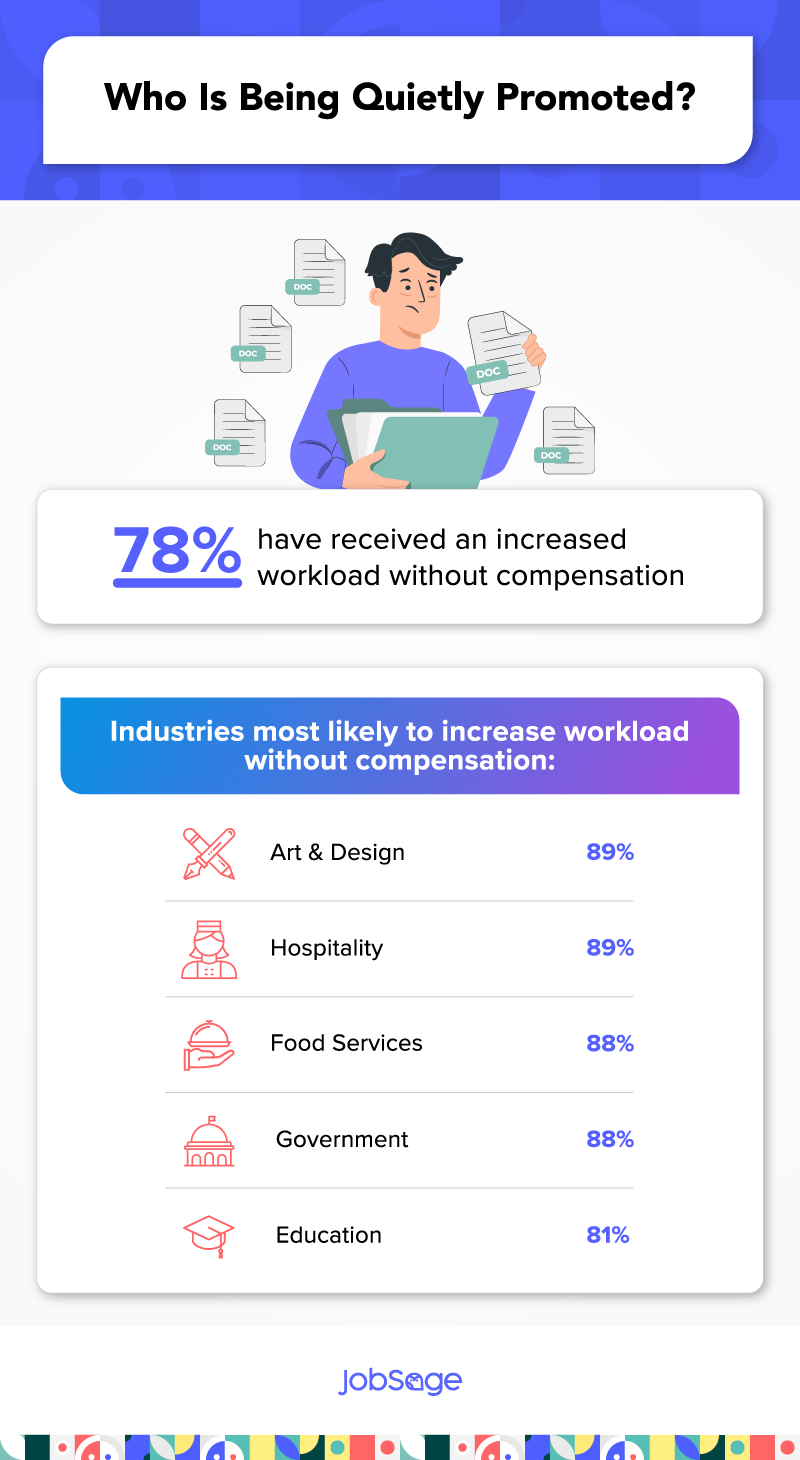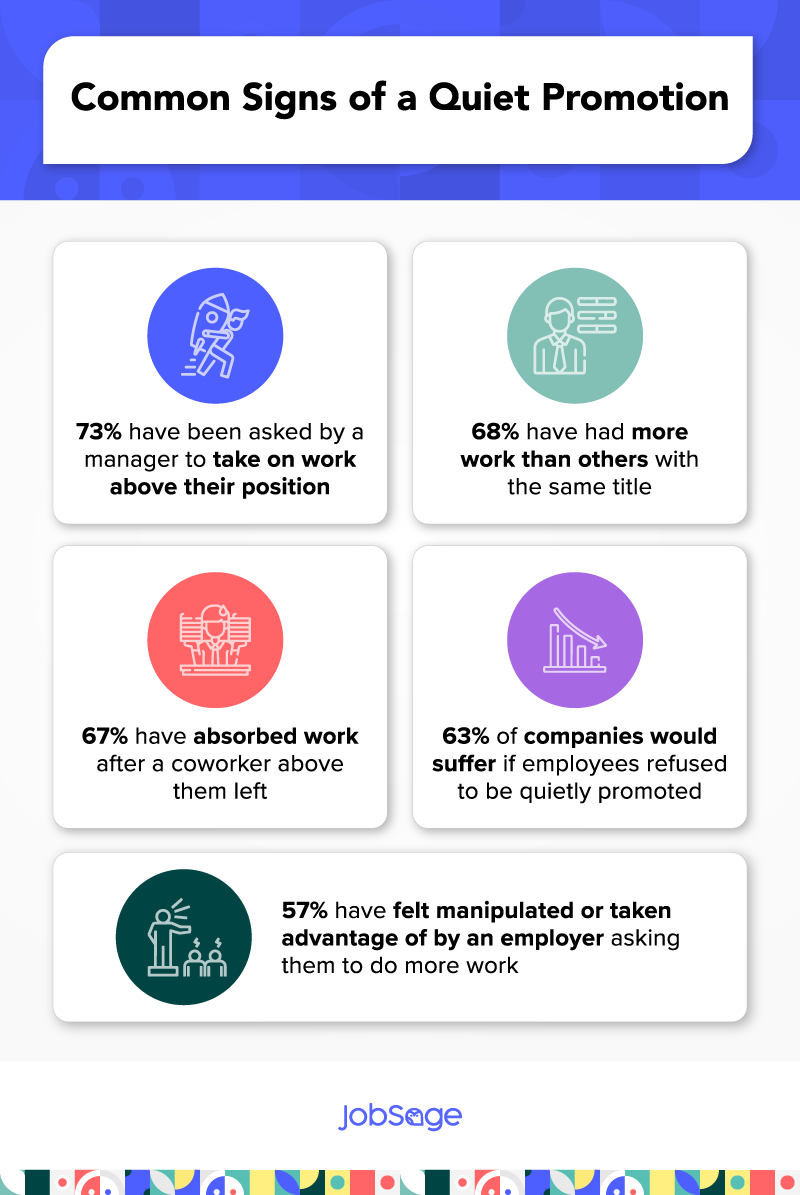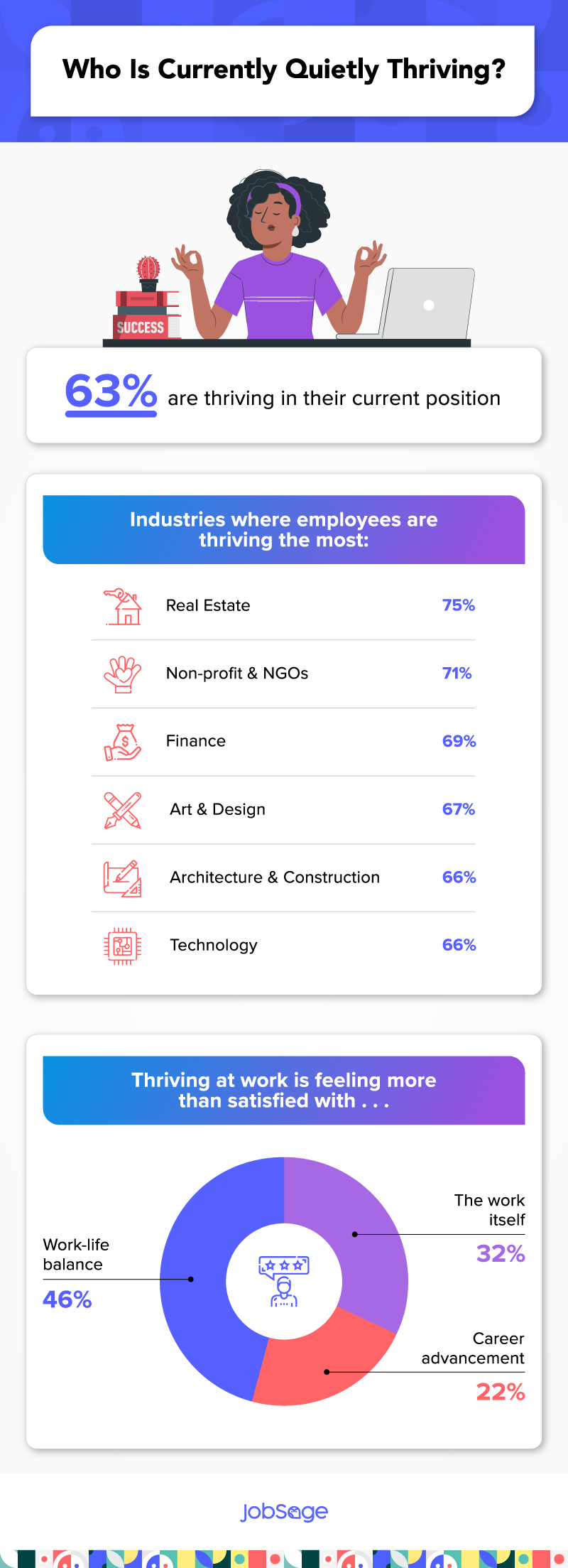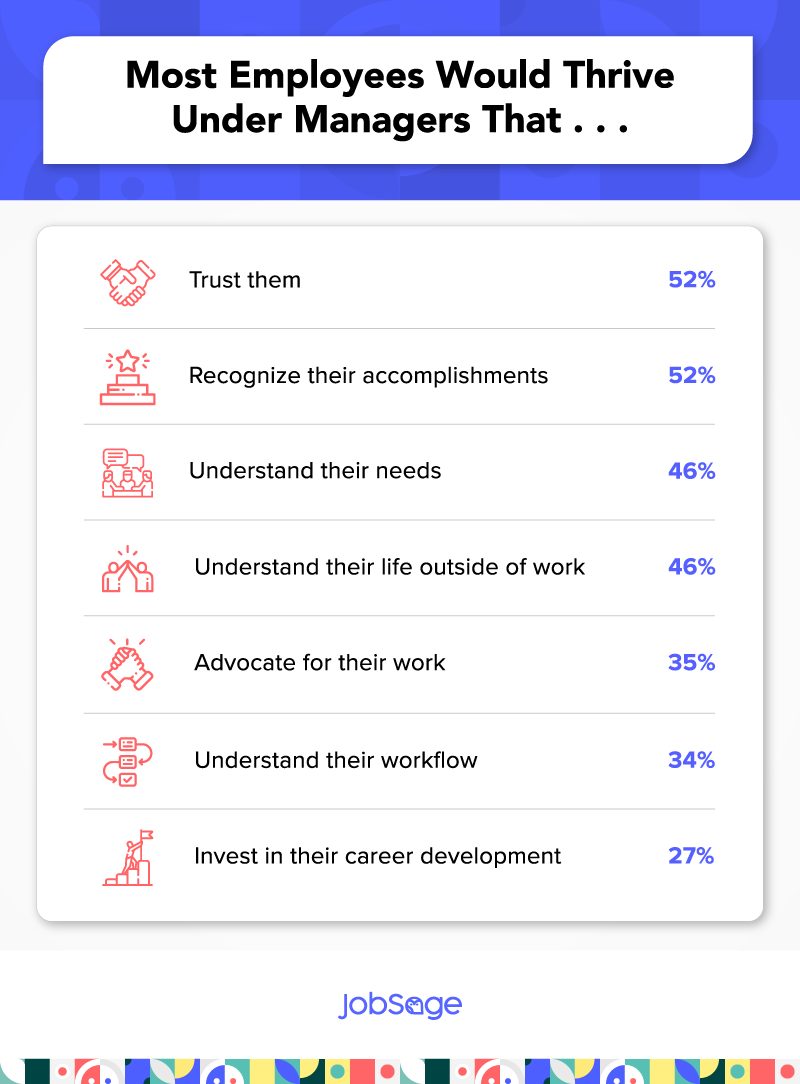Among all the talk of “quiet quitting” and “quiet firing,” murmurs of another, tongue-in-cheek phenomenon have emerged: quiet promotions, where an employer gives an employee increasing responsibility without a pay increase or title change.
JobSage wanted to explore the validity of this phenomenon via a survey and add our own term to the mix: quiet thriving, indicating where and how employees are actually, secretly thriving right now, and how employers can best create an environment where employees can do so.
So, we surveyed 1,000 full-time employees on both of the above concepts. Read on to discover what we found.
Key findings
- When it comes to an increased workload without additional compensation, 78% of workers have had this experience.
- After a coworker above them left the company, 67% have absorbed the work.
- Of those surveyed, 73% have had a manager ask them to take on additional work.
- When an employer has asked them to do more work, 57% have felt manipulated or taken advantage of.
These industries are most likely to “quietly promote” you
The primary experience of being “quietly promoted” refers to receiving an increased workload in your position without additional compensation. As it turns out, employees commonly meet with this phenomenon in American workplaces. More than 3 in 4 American workers (78%) have experienced a “quiet promotion” based on that definition.

But who exactly is being quietly promoted across the workforce? The industries most likely to “quietly promote” you are art and design and hospitality, both of which have a whopping 89% of their industry reporting the practice. Close runner-ups are food services and government at 88%. Educators (81%) are also commonly “quietly promoted.”
This is how you might have been quietly promoted and not realized it
Outside of an increased workload without additional compensation, workers can watch out for some signs of being quietly promoted. For example, being asked by your manager to take on work above your position reportedly has happened to 73% of American full-time workers.

Do you have more work than others with your same title? If so, you have that in common with 68% of respondents. This is another sign of being quietly promoted in the workplace.
Other common signs are needing to absorb work after a coworker above you leaves the workplace (67%), being in an environment where the company would suffer if employees refused to go above and beyond (63%) and feeling manipulated or taken advantage of by an employer asking them to do more work (57%).
63% of workers currently want a promotion
Given the state of quiet promotions, we wanted to analyze the current state of being genuinely promoted in the workplace. For example, 63% of workers want a promotion or another role within their organization. Nearly 7 in 10 (68%) have taken on additional tasks with the hope of being promoted.
On the flip side, 59% feel under-compensated for the work they perform and 42% feel their efforts at work go unnoticed. Over 1 in 5 (22%) have actively refused attempts to be quietly promoted, such as refusing to do extra work for an employer without a promotion or raise.
Of the respondents surveyed, the industries that were most likely to regularly promote their employees were engineering (77%), government (73%), architecture and construction (69%), legal services (69%) and non-profit and NGOs (68%).
Work is changing — these industries are thriving
Plenty can be improved upon in the workplace. Terms like “quiet quitting,” “quiet firing” and “quiet promoting” all point to disconnects between employers and employees that need to be addressed. In light of all this, we wanted to see where the opposite is occurring — in other words, where are workplace dynamics flowing healthily, and employees thriving?

Interestingly, 63% of workers reported that they feel they’re currently thriving in their position. The industries most likely to indicate as much were real estate (75%), non-profit and NGOs (71%), finance (69%), art and design (67%), architecture and construction (66%) and technology (66%).
When asked what thriving at work means to them, nearly half of respondents (46%) said that it looks like being more than satisfied with their work-life balance. Others said it looks like being more than satisfied with the work itself (32%) or their career advancement (22%).
The best ways to create a “quietly thriving” workplace
If there are workplaces where employees are currently thriving, how can other workplaces replicate their conditions to get the same results? We asked respondents what allows them to thrive in the workplace, and their responses include the work-life balance (60%) and enjoyment of the work (46%) discussed when asked what thriving means to them.
Other ideal conditions include flexible hours (43%), a favorable salary (41%) and a supportive manager (41%). “Supportive” is a general term, so we asked what specific actions managers can take to support their employees thriving at work.

It seems that the winning combination of a supportive manager is one that creates a trusting, celebratory environment. According to our results, the majority of employees would thrive under managers that trust them (52%) and recognize their accomplishments (52%).
Other supportive measures managers can take on behalf of their employees would be understanding their needs (46%), understanding their life outside of work (46%) and advocating for their work (35%). Employees would also appreciate managers that understand their workflow (34%) and invest in their career development (27%).
Users use our platform to review employers on five tenets: inclusion, purpose, growth, flexibility and feedback. When surveyed, employees rank the opportunity to grow (38%) and a sense of purpose beyond making money (26%) as important to their ability to thrive in the workplace.
Creating a thriving workplace starts with transparency, which is the core mission of JobSage’s online workplace review platform. Take advantage of our insights to ensure you won’t end up in a company that will burden you with work above your paygrade without appropriately compensating you.
Methodology
On October 6, 2022, we surveyed 1,002 Americans who are currently employed full-time on their workplace experiences. 64% identified as male, 35% as female and 1% as nonbinary or preferred not to say. 7% were Baby Boomers, 25% Gen X, 60% Millennials and 8% Gen Z.
